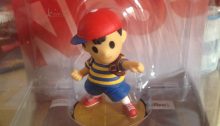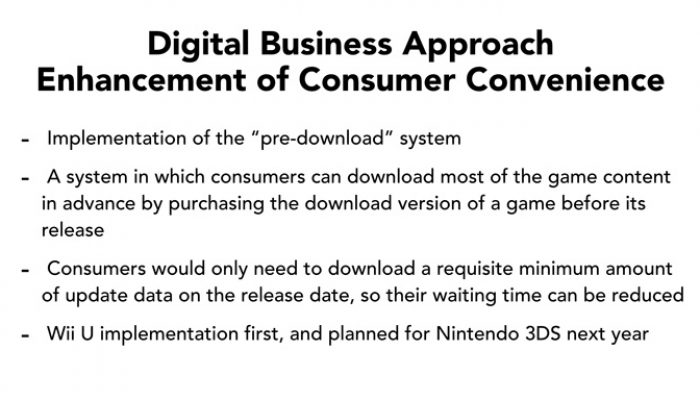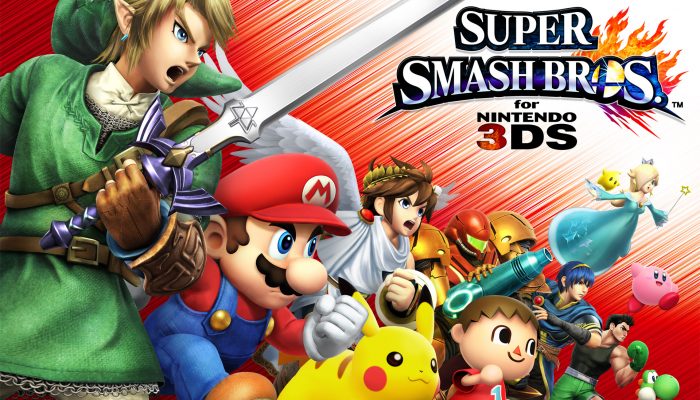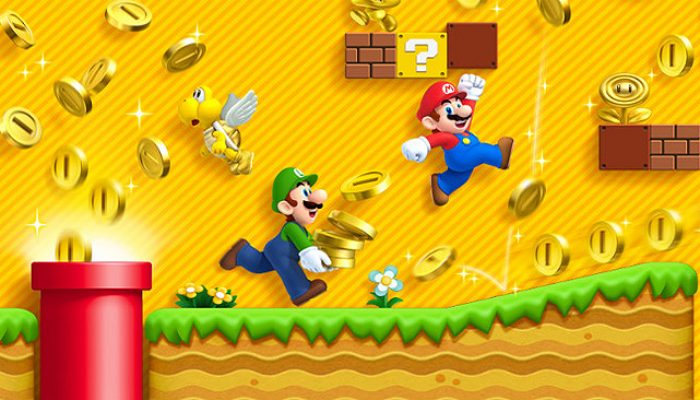 “In addition, our development team has been testing various forms of amiibo other than plastic figures.”
“In addition, our development team has been testing various forms of amiibo other than plastic figures.”
☆ NintendObs Event – Nintendo Q3 FY3/2015 Q&A.
Question:
I would like to know a little more about amiibo. Even by taking into consideration the difference in the Wii U hardware installed bases in Japan, Europe and the United States, when I calculate how many amiibo figures have been sold against the number of compatible software titles sold in the same region, I still cannot tell why the amiibo attach rate shows such regional disparity. Also, with Nintendo 3DS compatibility, how do you think the potential of amiibo will grow? I would appreciate it if you could touch on profitability too.
Answer:
Satoru Iwata (President):
Firstly, you are correct in saying that the sales of amiibo and its attach rate to the compatible software, or how many amiibo figures each consumer has purchased, differ by region.
When it comes to the figure and video game entertainment category, there are two existing franchises: Activision released “Skylanders” four years ago, and Disney released “Disney Infinity” two years ago. In contrast to these two franchises, in which each figure is compatible with one software title, amiibo is compatible with multiple software titles. While under development, it was internally referred to as “NFP (Nintendo Figurine Platform).” In other words, we were spreading the message inside the company that amiibo would be a “platform.” What we are offering with one amiibo figure is the ability to experience a range of entertainment with a variety of software. However, before we actually launched amiibo, the number of consumers who were aware of the overall concept of this product category, namely, toy figures are lined up on a store shelf in the video game section and when you buy and use it with a game, something very fun would happen, differed greatly in Japan from the rest of the world. This product category is called “Toys to Life” in the overseas markets, and it has established a large market in the United States. Although the size of the market in Europe is smaller than the U.S., there is still a certain level of awareness. On the other hand, while “Toys to Life” products had been introduced also in the Japanese market, they were yet to show results in this country. In addition, when it comes to popular toy figures in Japan, they are generally a bit smaller in size and cost a bit less than amiibo. In fact, when we first explained amiibo to Japanese distributors, they advised us that amiibo would be a little too big in size and cost slightly too much for a toy figure in Japan. However, because we were aware of the size of the global market for this product category, we decided that this size and price point was most appropriate for the global market. Now that we have witnessed solid results for amiibo in the U.S., Australia and Europe, we believe we made the right decision. So, to answer to your question, we acknowledge the large awareness gap for “Toys to Life” products and their uses in Japan and the overseas markets, and we feel that some time is needed to close this gap.
In addition, we do not think that we can fully convey to consumers the full potential of amiibo yet. This is because the way consumers use the figures for Activision’s “Skylanders” game or Disney’s “Disney Infinity” game is not exactly the same as the way they use amiibo, and to make things slightly more complicated, amiibo use varies depending on the software. If we use “Smash Bros.” as an example, players can use amiibo to train the figure player (FP) in the game, and the FP’s improved capabilities will accumulate in the NFC chip installed inside the amiibo figure. By using amiibo, players can nurture their own players, who can be either allies or rivals in the game. While this is one unique way to use amiibo in a game, in “Mario Kart 8,” when you tap amiibo figures to the NFC touchpoint of the Wii U GamePad, your racers receive special racing suits that you cannot obtain elsewhere. And, the new download software example I explained in my presentation earlier is where amiibo can be used in place of, in a sense, a ROM cartridge to play some portions of certain NES and Super NES games. We will continually propose different play styles that take advantage of amiibo. But first and foremost, we understand that we have to change the current situation where many people are still wondering what they can do with amiibo. We will persist until consumers understand that they just need to tap the amiibo figure and something will happen, and will excitedly try it with a variety of software. If we can achieve this, amiibo will become a precious possession for our consumers, so we definitely want to bring it to fruition, but in doing so we also understand that it will take some time. In fact, even though “Toys to Life” products had already been selling very well in the U.S., amiibo was virtually unknown at first, but in the fairly short time between its launch and Christmas, consumers got a hold of a significant volume of amiibo figures and the word spread. Now that there is a certain level of awareness that amiibo figures can be used with multiple software titles, we believe we will be able to dramatically improve the situation for amiibo by increasing the number of amiibo compatible software titles.
For your information, because “Super Smash Bros. for Nintendo 3DS” became compatible with amiibo last week, I was watching the amiibo sales in Japan with great interest. We were able to confirm that a small increase was found in the popular amiibo characters. On the other hand, because more than a few popular amiibo characters were already sold out, we could not make the simple week-on-week amiibo sales comparison to judge the influence of the New Nintendo 3DS compatibility. Now that New Nintendo 3DS is compatible with amiibo, the number of amiibo compatible hardware systems has suddenly almost doubled in this country, so it is impossible to deny its impact. And when we release the NFC reader/writer peripheral for Nintendo 3DS, there will be another sudden increase in the number of amiibo compatible hardware systems. We would like to increase the value of amiibo by doing various things, including expanding the compatible hardware.
Finally, regarding your question about amiibo’s profitability, we have been selling amiibo at the same MSRP so that consumers will easily understand its price point. However, I think you can easily tell just by looking at several amiibo figures that production costs vary for each one of them; some amiibo have a more complex structure and a greater number of colors, which means they cost more to produce than others. Nevertheless, since setting different price points could be misinterpreted as the company valuing certain characters more than others, we came to the decision to set an MSRP that would return a profit from the amiibo platform as a whole. I just mentioned in my presentation today that we will also sell card-format amiibo products. By taking advantage of the shorter delivery time and lower productions costs for card products, we would like to further expand how amiibo can be used in yet more play styles. In addition, our development team has been testing various forms of amiibo other than plastic figures. We hope we can propose amiibo products in various forms in the future.
— Third Quarter Financial Results Briefing
Source: Nintendo JP.
At NintendObserver, the comments are on Discord.
Click on Community to learn more. 🙂
…
…Wanna play? Buy a Wii U.
And if you’ve already got yours, here are all the games already available on the platform. 😀



